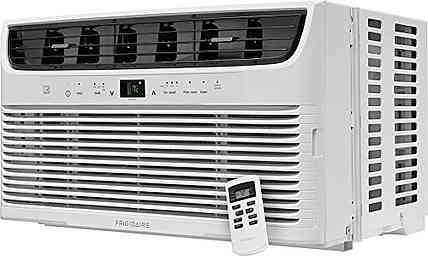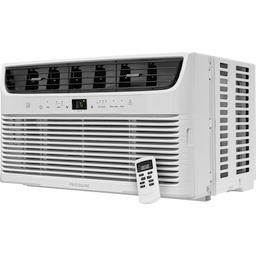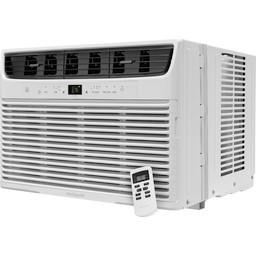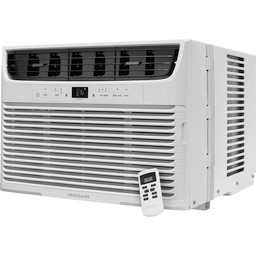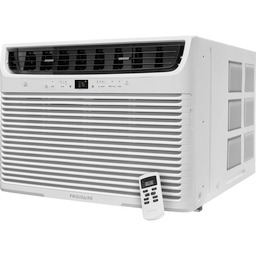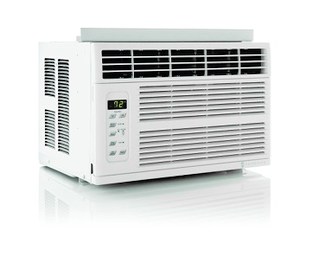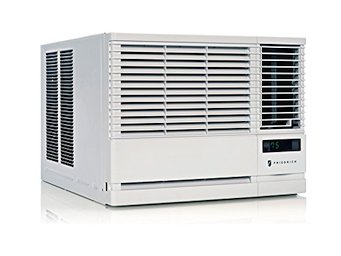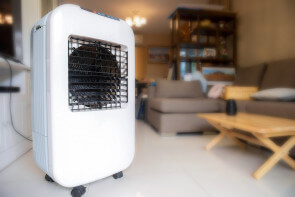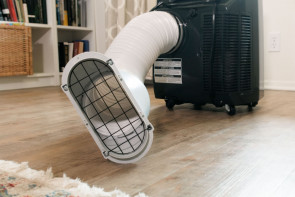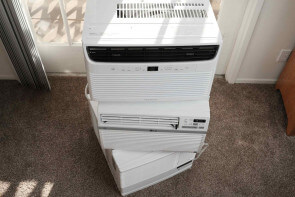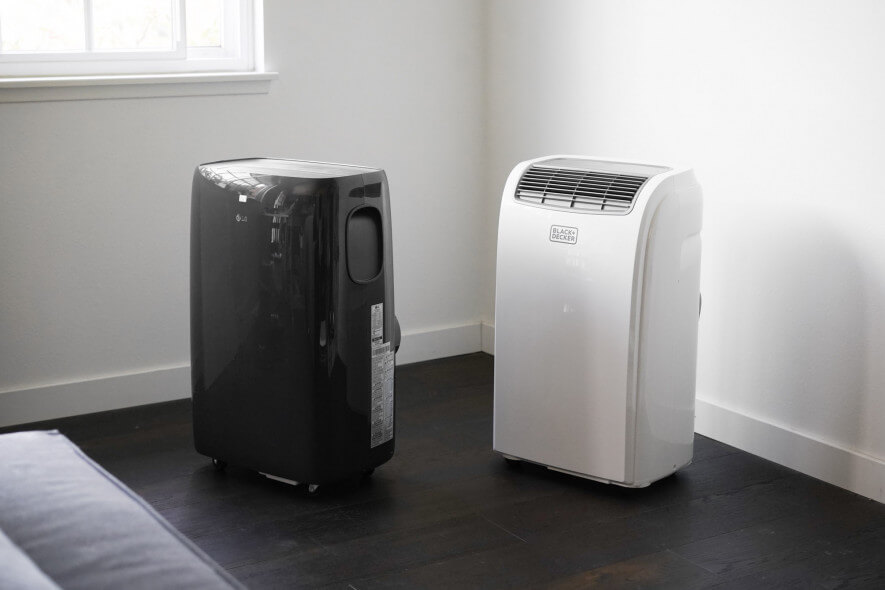
What Size Air Conditioner Do I Need?
Many people reading our reviews of the best portable and window air conditioners have asked us “What Size Air Conditioner Do I Need?”
Many people reading our reviews of the best portable and window air conditioners have asked us “What Size Air Conditioner Do I Need?”
The answer is complex. To choose the size of an air conditioner, you need to know how big your room is, but you’ll also need to know where the heat in your room comes from. Heat coming in through sun-facing windows is different from the heat that naturally circulates through your house on a hot day. The humidity outside and what you’re planning to do inside are also important to know when you’re calculating air conditioner sizes.
Calculating sizes for window air conditioners

The easiest air conditioner type to work with is a window unit, since they only cool one room and they’re very efficient compared to other types that you can install yourself. We’ve made a calculator widget that can tell you what size to look for, based on the official Energy Star guidelines.

In our review of the best window air conditioners we focused on 8,000 BTU units, since they’re the most popular. Just because an air conditioner is easy to find in stores and you can afford the sticker price doesn’t mean it’s necessarily a good pick for your room, though. Take the time to find out the right size, and you’ll save yourself some headaches.
Knowing how much capacity you need means knowing where the heat in your room comes from. For example, more than two people using the room adds extra heat, averaged out to 600 BTUs per extra person. A very sunny room needs 10% more BTU capacity. Adding a kitchen makes the most difference, with stovetop or oven use adding 4,000 BTUs to the recommendation.
Choosing the right size for split AC systems
The big difference between a split system and a window system is that instead of using a window to separate indoor and outdoor components, split-system installation requires drilling holes, running coolant and drain hoses, running dedicated electrical wiring, and hanging the hardware from your walls. The system is also typically more expensive to begin with, from three to five times more expensive than a window air conditioner for the same BTU capacity.
Sizing for a split-system or “ductless” air conditioner is the same as with a window system. It’s still only cooling one room, and you’ll have the same problems with humidity if it’s cooling too quickly. If you’re cooling a big room, though, it’s far easier to find a large ductless air conditioner that can cool more than 1,300 square feet of space, and you have more flexibility to install it in a location that gives you the most effective airflow.
Choosing the size of a central air conditioner
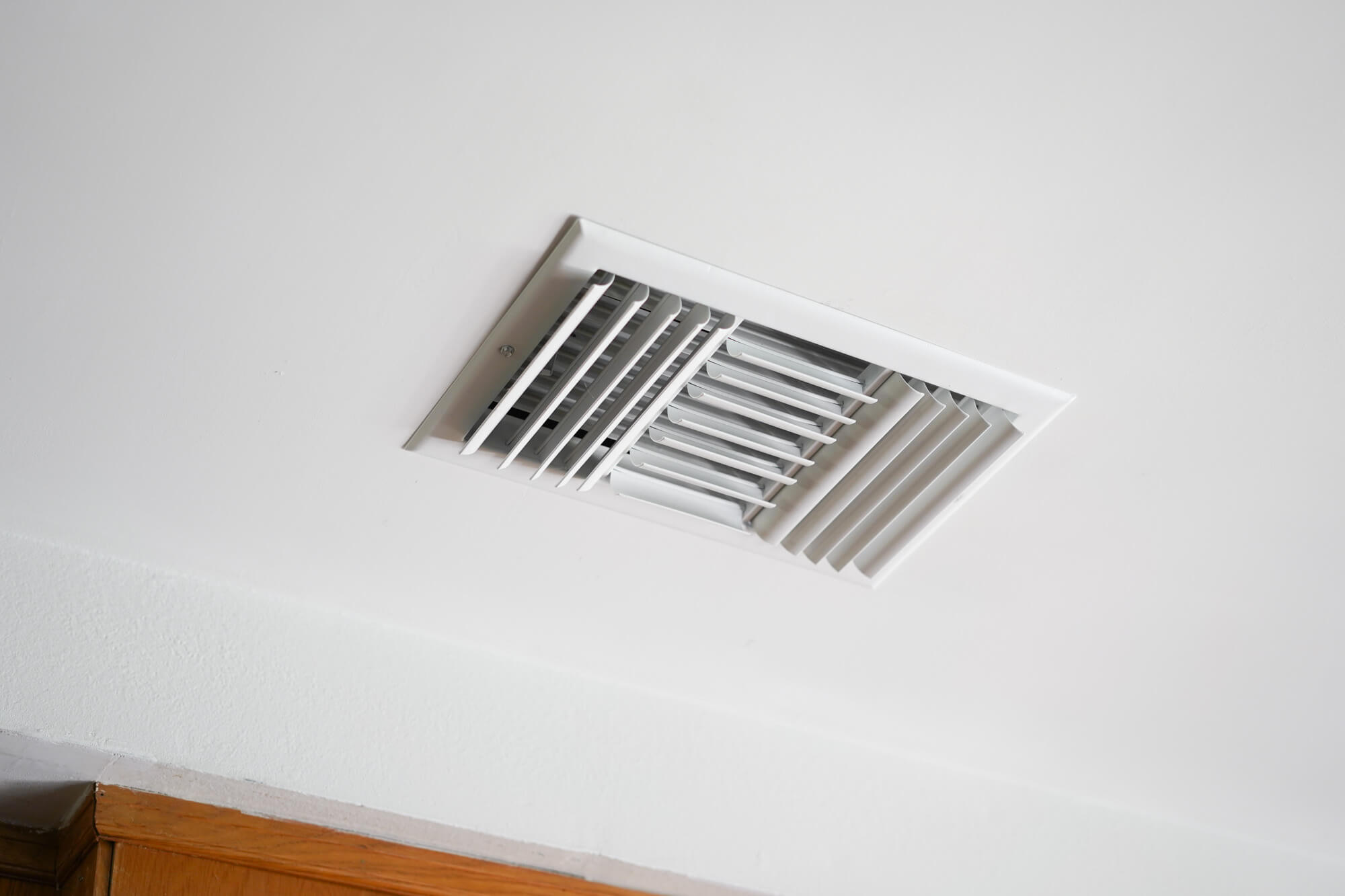
Moving from room air conditioners to central systems, the calculations become more complex. Heating, ventilation and air conditioning (“HVAC”) systems rely on a large central fan blowing air through ducts to cool or heat each room in a building.
The shape and size of ducting in your house will change requirements for the central fan (or “air handler”), and some installations may need additional circulation fans to keep an entire building at a more even temperature.
Aside from the extra calculations for an air handling system, with the amount of money you need to invest in a central air conditioner it’s also important to tweak your system capacity to match the demands of your climate. Air conditioners this large are often rated in “tons” of 12,000 BTUs with a standard rule of thumb being 1.5 tons per 1,000 square feet. A home on the Florida coast will need more cooling capacity and will have far different humidity concerns than a home in Nevada, even if summer temperatures reach similar highs.
While it’s possible to buy parts for do-it-yourself work on a central HVAC system, a professional will help you install a system that actually does what you need it to do. HVAC technicians in the U.S. are certified by either the North American Technician Excellence (NATE) program or the HVAC Excellence program, though certification is not required. Finding a bonded local contractor who will be able to inspect and service your system for the next 20 years isn’t always easy, but asking other homeowners for references is well worth the time it takes.
Choosing the size of a portable air conditioner

Portable air conditioners work differently than other systems, and there are a few facts that make buying them a bad idea in most cases:
- Portables use far more power than window units, and don’t cool rooms well
- Single-hose ACs heat up your room when it’s hotter than about 85 °F outside
- Tower fans are better than small portable ACs for most conditions
- So, if you can’t install anything else, get the biggest, quietest dual-hose portable you can afford
A window air conditioner will be far quieter and more effective, if you can find a way to install one. But if you just want to add some comfort in milder heat below 90 °F, and you don’t mind the noise, portable air conditioners can work fairly well.
We tested them in a bedroom, great room, and at our open-floor-plan office. In our experience, a 12,000 BTU portable can work well in a bedroom up to about 200 square feet, and a 14,000 BTU unit will make some difference up to 400 square feet if you can tolerate the noise.
If you have to survive a serious heat wave, though, running most portable air conditioners will actually make your situation worse.
The biggest difference between these and other air conditioners is that all of the hottest components, the condenser coil and compressor motor, are in the room with you. This fact puts a hard limit on the efficiency of the portable air conditioner — the more heat it collects, the more difficult it will be to remove that heat from your house. It’s rare to find a portable with a capacity of more than 14,000 BTUs.
The only way for a self-contained air conditioner to remove heat from its condenser coil and compressor is with forced air vented outside – usually through a window. This works fairly well in temperatures up to about 85°F, though even then it’s not nearly as efficient or quiet as other systems.
Where does the air come from?
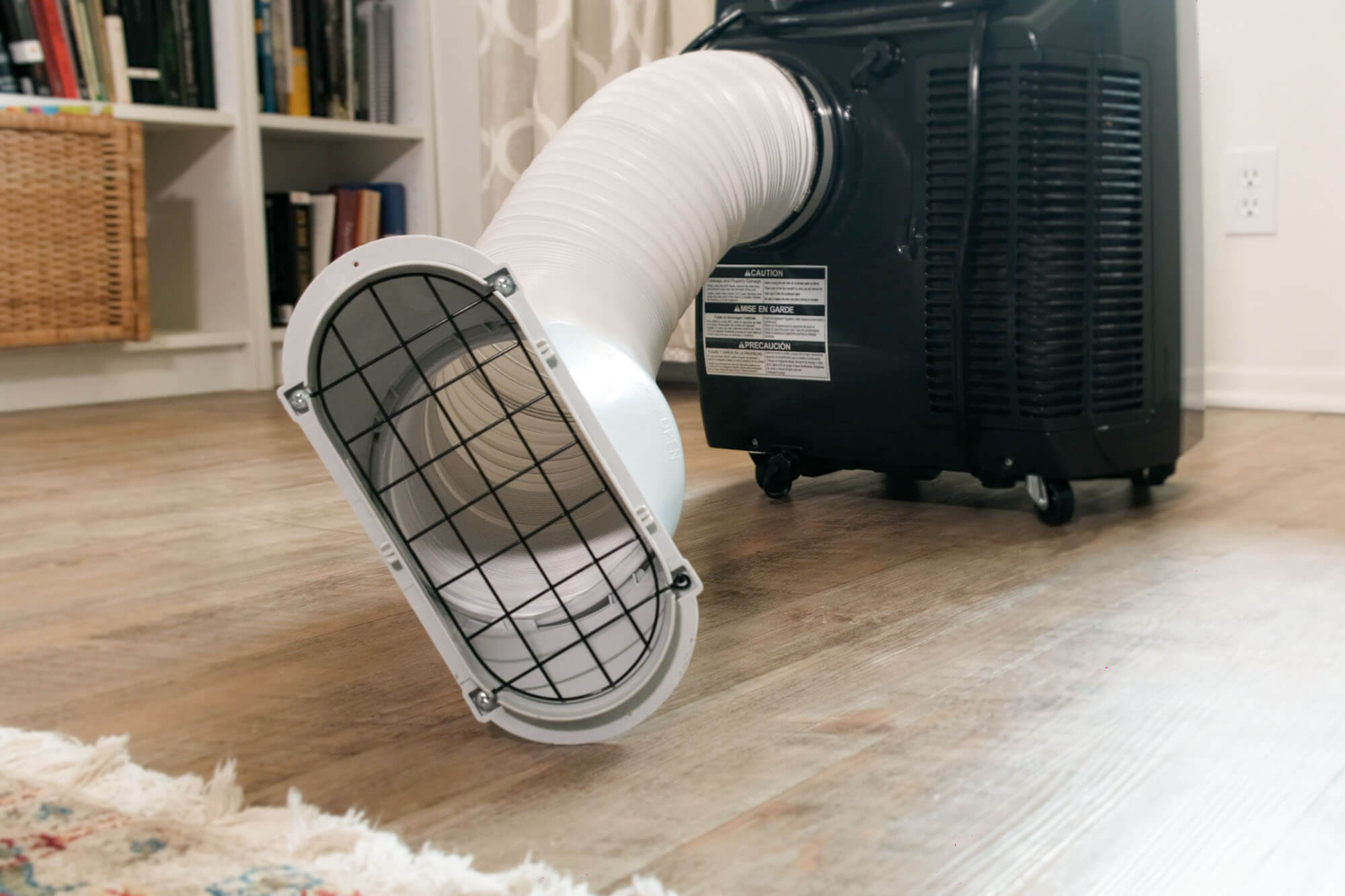
But there’s another catch: If the portable air conditioner only has a vent hose, and no air intake hose, the air blowing out the window is the air you’ve just cooled. Worse, this air will be replaced with hot outdoor air coming in through doors, windows and cracks. When outdoor temperatures are above 85°F, a portable air conditioner can’t absorb enough heat to offset the extra load, so the room temperature will start to rise.
Dual-hose air conditioners like the Whynter – ARC-12 and Whynter – ARC-14 use a dedicated air intake hose, so the air being cooled stays in your room. But even after solving that problem there’s a limit to how effective a portable air conditioner can be: The department of energy down-rates the big ARC-14, which is technically capable of capturing 14,000 BTUs, to an effective performance of only 9,000 BTUs in average conditions.
This chart shows our tests of 12,000 BTU single-hose and dual-hose air conditioners against an 8,000 BTU window unit in 97°F heat. It’s no contest. All the inefficiencies add up to make portable air conditioners a bad solution for anything more than moderate 85°F heat. A bigger portable like the Whynter ARC-14 has a bigger fan and can circulate the air in a bigger room, but of course it’s also louder.
What happens when an air conditioner is too big?
The biggest problem with oversized air conditioners is humidity. The hotter air is, the more humidity it can hold. This is why we usually talk about “relative humidity” rather than a specific amount of water present in the air: Desert air at 10% relative humidity in the heat of summer actually has more grams of water trapped in it than when it measures at 30% relative humidity during cool winter evenings.
When relative humidity is at 100%, the air is holding all the moisture it can, and a sudden drop in temperature will force the water out of the air — like when the saturated air from your hot shower bumps into your bathroom mirror and leaves a heavy fog.
An air conditioner naturally pulls humidity out of the air the same way it does the cooling. The air moves past the extra-cold fins of the evaporator coil, and the heat moves out of the air into the fins. The excess humidity (now more than the air can hold) condenses on the cold fins.
Here’s where air conditioner size is important, though: Heat is pulled out of the air more quickly than water is. The above graph shows the temperature and humidity we recorded in a 115-square-foot bedroom with an 8,000 BTU air conditioner, which is about 30% too much heat-absorbing capacity.
The air cooled off quite quickly, and the air conditioner turned off while there was still plenty of excess water to extract. As time went on, the air conditioner did a good job of cooling any heat that built up or leaked into the room, but as the walls and objects in the room got colder the humidity problem got worse. If you kept up these conditions for a long time, water could start to condense on cold surfaces in the room.
The solution: Dry mode
If you’ve got a very small room to cool, you may not be able to find an air conditioner with the “correct” capacity — 5,000 BTUs is usually the smallest model. But on some air conditioners, there’s an optional setting to help offset the problems by turning the fan speed down. This means water has more time to condense out of the air while it flows past the coil, since your air conditioner will have to run for longer to hit your target room temperature.
Since the majority of air conditioner power consumption comes from the compressor, not the fan, “dry” modes use almost as much power as regular settings but cool more slowly. So, buying an air conditioner that’s larger than you need will mean you spend more on power as well as the initial price of the system.


